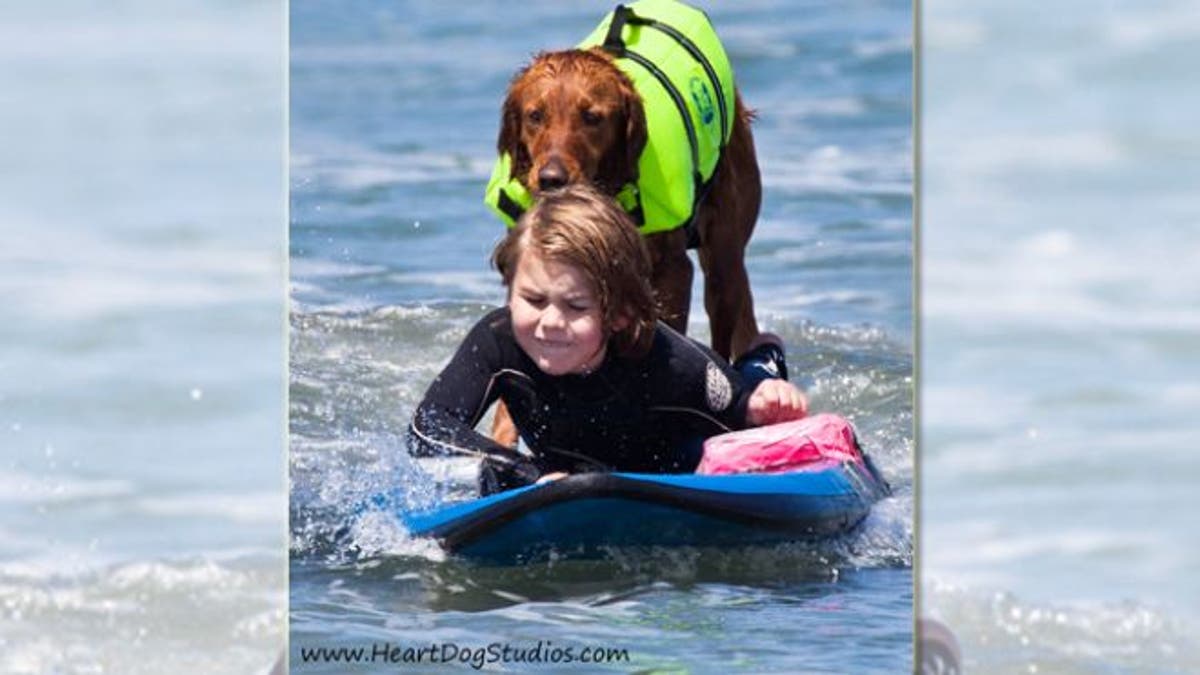
In July 2008, Ian McFarland was in a car accident that claimed the life of his parents, and in the end, left him with a life-altering brain injury. Ian used to love riding the waves with his dad, but the thrill of getting into the water soon turned into a real fear for him after the car crash - until he met Ricochet, the surfing therapy dog. (Source: www.HeartDogStudios.com)
More and more owners are using their dogs' ability to love and soothe by training with them to become therapy teams. Not to be confused with service dogs, which assist disabled people with basic living functions, therapy dogs—and their owners—visit different facilities to deliver pure canine comfort.
Related: Ricochet the Surfing Therapy Dog
The variety of venues is expanding, from hospitals and assisted-living complexes to schools and hospice centers, says Billie Smith, executive director of Therapy Dogs in Cheyenne, Wyo.
More from Prevention: 9 Pet Myths Debunked
The American Kennel Club estimates there are 50,000 registered dog-owner therapy teams in the United States, a growing number that reflects the mounting scientific evidence that canine-human interaction imparts health benefits. In one Alternative and Complementary Therapies study, a mere 12-minute visit with a dog lowered blood pressure and anxiety in patients with heart failure. Even the dogs reap rewards: According to findings in the Veterinary Journal, both canines and humans experience increases in oxytocin and dopamine levels, two neurological signs of happiness, after positive interactions between the two species.
More from Prevention: 2 Minutes to a Happier You
It's gratifying for dog owners too. Just ask Janet Cundari, who visits the Westchester Medical Center's Behavioral Health Unit in Valhalla, N.Y., with her sheltie, Karly. Cundari's payoff is knowing she's making a difference in someone's life. "When we arrive, the patients look sad," says Cundari, who is also the treasurer of Heart Pet Programs, a nonprofit that trains therapy teams.
"But then they start interacting and asking me questions about Karly and become completely animated. It's as if they're escaping their problems, even if only for a short time. How much better does it get than that?"
Share The Love
Think you and your dog would make a good therapy team? Here's what you need to consider.
• Temperament beats breed or size. "The dog must love receiving attention from people, including strangers," says Rachel McPherson, executive director of the Good Dog Foundation, which supports teams at more than 290 facilities. Dogs usually must be at least 1 year old. They can work for as long as they're healthy.
• To register with a national group, you and your dog will likely have to pass an in-person exam to test your dog's responses to your commands and how she fares in situations such as meeting a person in a wheelchair. Some evaluation criteria are posted online; use them to judge your chances.
• If you and your dog won't ace the test right away, Pet Partners lists local groups online with therapy-dog training programs that typically last 5 to 16 weeks and cost $100 to $300.
Check out these three leading therapy-dog organizations:
• Pet Partners petpartners.org
• Therapy Dogs therapydogs.com
• Therapy Dogs Intenational tdi-dog.org
